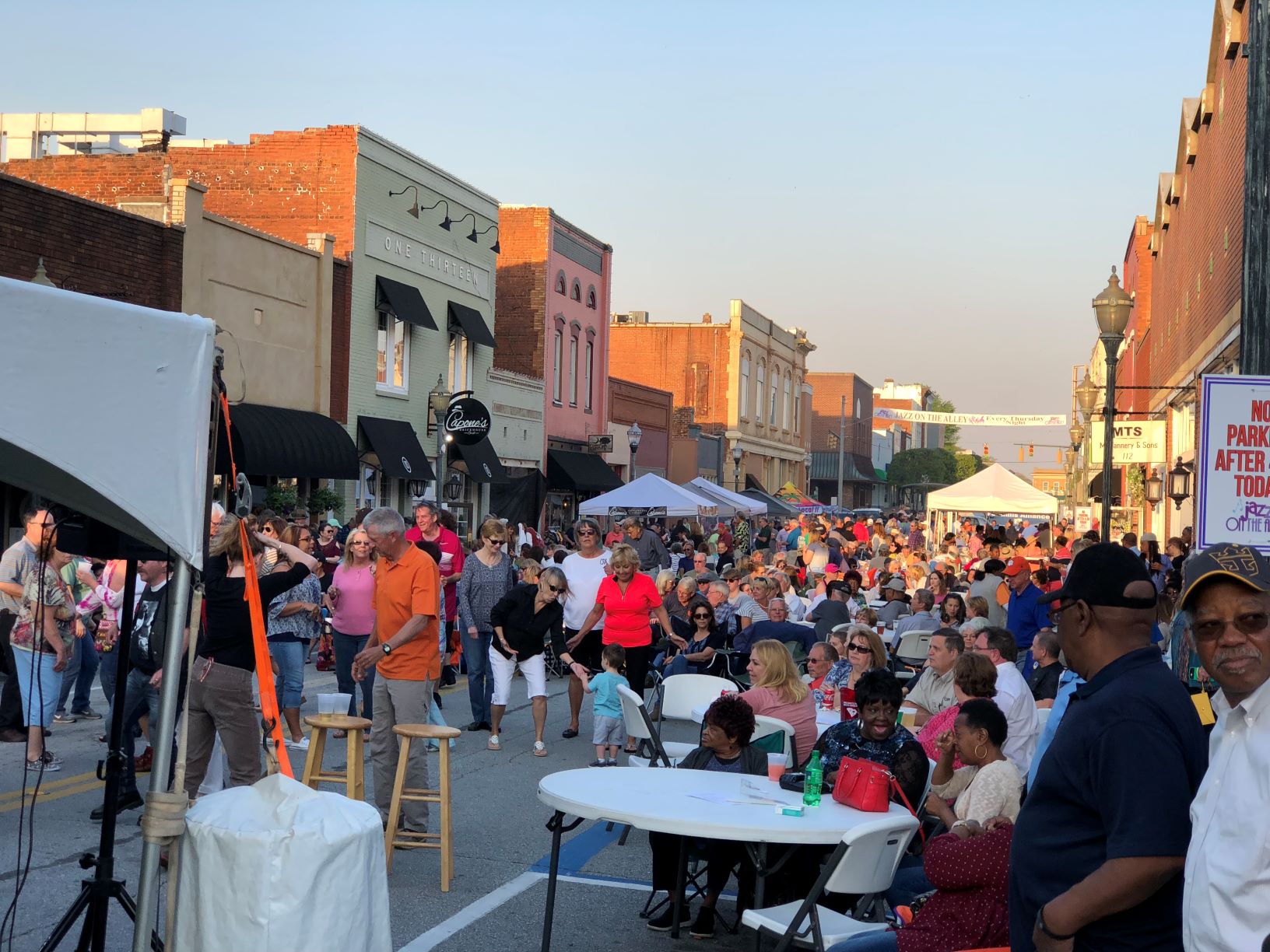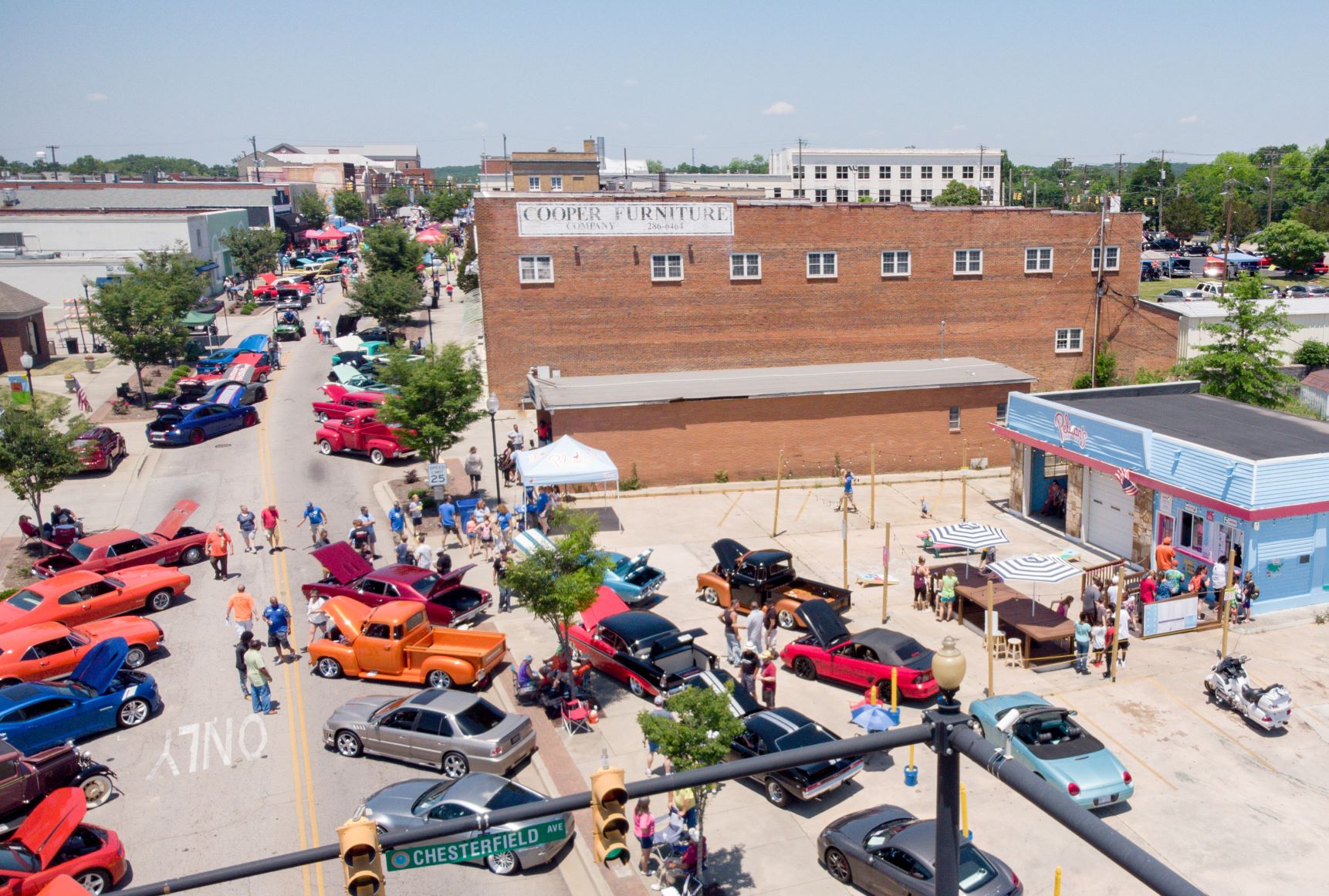Cultural Activities Support Regional Economies
Ask Riley Johnson, Seneca's events coordinator, about the impact cultural and recreational events can have on a region's economy, and he will tell you about a conversation he had with a real estate agent in town.

Seneca's Jazz on the Alley takes place weekly on Thursday nights from April to October.
Photo: City of Seneca.
Johnson was attending an accommodations tax committee board meeting, and he began talking about a 5K and half-marathon race held in Seneca. The real estate agent sitting next to him told him about a man from Indiana who came to Seneca to run the race and, while he was in town, he looked around the region. The result? The man fell in love with the area and bought a $1.5 million house on Lake Keowee.
"That's just one story from one [real estate agent], but you can read the accommodations tax numbers. You can see that restaurant sales have increased, that hotels stays have increased," Johnson said. "We've built two new hotels in the last three years."
Johnson's point is echoed by downtown development directors, cultural event planners and industry recruiters around the state: draw people into your town for cultural programming or recreational events, and the entire region will reap the benefits in tourism, new residents, tax dollars and economic development.
Since 2010, Seneca has gone from hosting three events each year to about 70. The result? Accommodations tax revenue has increased from about $25,000 a month to close to $60,000, Johnson said.
"Our job is to introduce people to the area, and it doesn't take long for them to get out, cruise around the county and they'll fall in love with it. We're surrounded by water with Lake Hartwell and Lake Keowee, and we are just 30 minutes from the mountains," Johnson said. "This is a melting pot. You go to Jazz on the Alley and you'll see 500 to 800 people, many who are from all over the country who have moved here."
Jazz on the Alley is Seneca's largest cultural event, taking place downtown on Ram Cat Alley every Thursday from April to October.
In the state's capital city, there are hundreds of events each year. The Soda City Market each Saturday on Main Street, the SC State Museum, Riverbanks Zoo and Garden and the Columbia Museum of Art are just a few of the attractions that draw people to the Midlands.

The Soda City Market operates on Main Street in Columbia every Saturday
year-round and averages 150 vendors each week.
"While we don't curate or organize events, we certainly use existing events to heighten awareness of things to do in the destination and entice visitors to come to the Columbia region for overnight stays, to visit our attractions, eat in our restaurants and experience everything that Columbia has to offer," said Charlene Slaughter, director of communications for Experience Columbia SC." Numerous festivals like St. Pat's in Five Points, Columbia Food and Wine, Hip Hop Family Day and the Main Street Latin Festival give visitors a taste of Columbia's vibe and a chance to interact with our neighborhood districts and locals."
One of Experience Columbia's goals is to increase the number of visitors to the region, including overnight and multinight stays in the area for leisure, group and convention travel, Slaughter said. In 2018, there were 14.8 million annual visitors resulting in a $2.3 billion direct impact, $256 million spending on lodging services and $119 million in contributions to local and state taxes, she said.
One of the keys to attracting visitors and businesses to an area is expertly promoting and marketing what the region has to offer. Experience Columbia applies for accommodations tax grants and shares data about the groups it books, including an annual report shared with stakeholders and community leaders.
"We also report marketing and advertising campaigns that run in travel media outlets such as Southern Living, Garden and Gun, the Food Network and Travel Channel as well as earned media to showcase examples of how we are investing accommodations tax dollars in marketing," Slaughter said. "The fact that the number of visitors coming to the area is growing indicates that it is working, and we are doing the right things to draw visitors to the area to stay in our hotels, visit our restaurants and attractions and solidify Columbia as a destination."

Show cars line South Main Street in Lancaster for the Red Rose Festival. Photo: Grey Hoodie Photo.
Attracting visitors and locals to downtown Lancaster restaurants and shops is the goal of Joe Timmons, the events and promotions manager for See Lancaster. The organization works to provide cultural opportunities and special events along with business incentives and assistance. Lancaster is one of the SC Arts Commission's cultural districts, a city chosen for having walkable areas and a concentration of cultural, artistic and economic activities. Lancaster has a cultural arts center that draws people to concerts, a community playhouse and an outdoor amphitheater.
See Lancaster has worked to draw visitors to the region through everything from banners on its street lamps to its signature event, the Red Rose Festival, which draws about 20,000 people to Lancaster each May, Timmons said. It also has started its popular Finally Friday concert series.

Lancaster's Finally Friday concerts take place the last Friday of each
month from June to September. Photo: City of Lancaster.
"We moved [the Friday concert series] to Main Street this year; it had been on a side street. It has blown out of the water and brought a lot of people downtown," Timmons said. "People come and eat downtown and go out. The businesses can't get enough of it."
Businesses were running out of food and beer the first Friday night, not expecting the size of the crowds. "Now they're used to it, and they've asked me to do more events on the green space," he said. "It's good for business."

Lancaster's Red Rose Festival takes place each year in May. Photo: Grey Hoodie Photo.
